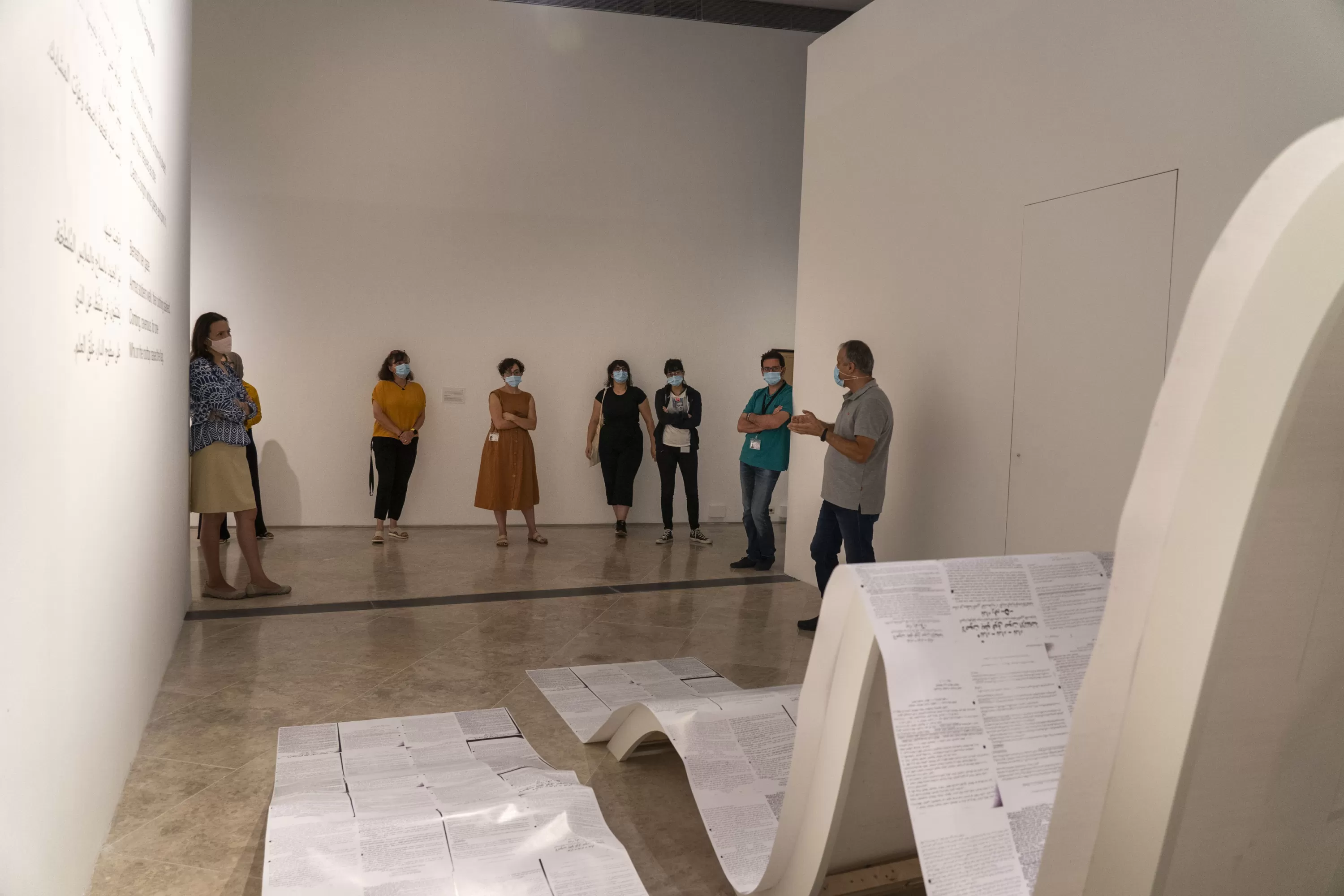
Birzeit:The Palestinian Museum reopened to the public at the beginning of September, having closed for several months as a precautionary measure amid the Covid-19 pandemic. The Museum announced it is ready to welcome visitors to its current exhibition Printed in Jerusalem: Mustamloun and its accompanying interactive educational space, in addition to its other facilities and gardens while affirming its full compliance with all public health and safety measures.
Curated by Baha Jubeh and guest curator Abdel-Rahman Shabane, Printed in Jerusalem: Mustamloun was organised in partnership with the Palestinian Heritage Museum at Dar Al-Tifel Al-Arabi in Jerusalem. The exhibition explores the relation between Jerusalemites and publications printed in their city, be their content political, educational, commercial, cultural or touristic, by examining the profession of the mustamly. A mustamly (plural: mustamloun) was tasked with dictating manuscripts to copyists and acted as an intermediary between authors and the public. Historically, this transmission of content was associated with censorship as well. This ancient profession disappeared as modernisation took hold.
Visitors to the exhibition will explore historical printing clichés and publications from Jerusalem’s Modern Press and Industrial Islamic Orphanage Press collections up-close, including school books, commercial, tourism and religious advertisements, political and cultural newspapers and magazines, social event invitations, and maps. In addition, the exhibition presents six curatorial interventions and a video documenting the present state of the Industrial Islamic Orphanage Press. The city’s narrative is also told through notebooks, memoirs and clichés belonging to influential Jerusalemite figures, such as illustrator Fatema Muhib, writer Mahmoud Shuqair and founder of the Modern Press, Anton Shukri Lawrence.
The exhibition is complemented with a new and long term interactive educational space in the Museum’s Glass Gallery tailored for children and families. The space comprises six stations: ‘Tinkering in the Printing Press’, which includes a variety of printing equipment and activities designed by the Science Studio, part of A M Qattan Foundation’s Educational Research and Development Programme; ‘Contrasting Images’, where children are encouraged to reimagine and produce visual material for the Palestinian school curriculum; ‘An Imagined Exhibition’, where visitors are encouraged to redesign and set up the exhibition; ‘Journeys’, where visitors are invited to design postcards promoting the Palestinian cities and villages they love; ‘Crosswords’ and ‘Communiqué’, which explore the political communiqués of the first Intifada with a creative, interactive approach. The space is designed to engage audiences and encourage them to produce their own contributions and statements about the exhibition and its themes. An educational brochure will be produced containing illustrated stories and activities for families to enjoy and complete at home.
Also accompanying the exhibition, the Museum holds events and activities designed and organised through its Public, Education and Knowledge programmes. These include online workshops, lectures and discussions, virtual tours, Object-in-Focus videos, and podcasts, in addition to some activities held in the Museum itself. Through its online events and activities, the Museum has succeeded in engaging a large number of people from Palestine and worldwide while also providing an opportunity for those unable to reach the Museum due to the Israeli occupation to participate in its programmes.
During the lockdown phase, the Museum organised the ‘Museum from Home’ campaign, which provided the public with an educational and knowledge-based museum experience through its online platforms.
Opening hours at the Palestinian Museum are Sunday to Thursday, 9:00–17:00. These times are subject to change, and all updates are available on the Museum website.
Printed in Jerusalem: Mustamloun is supported by: Arab Fund for Economic and Social Development; and A. M. Qattan Foundation through the ‘Visual Arts: A Flourishing Field’ (VAFF) Project, funded by Sweden.